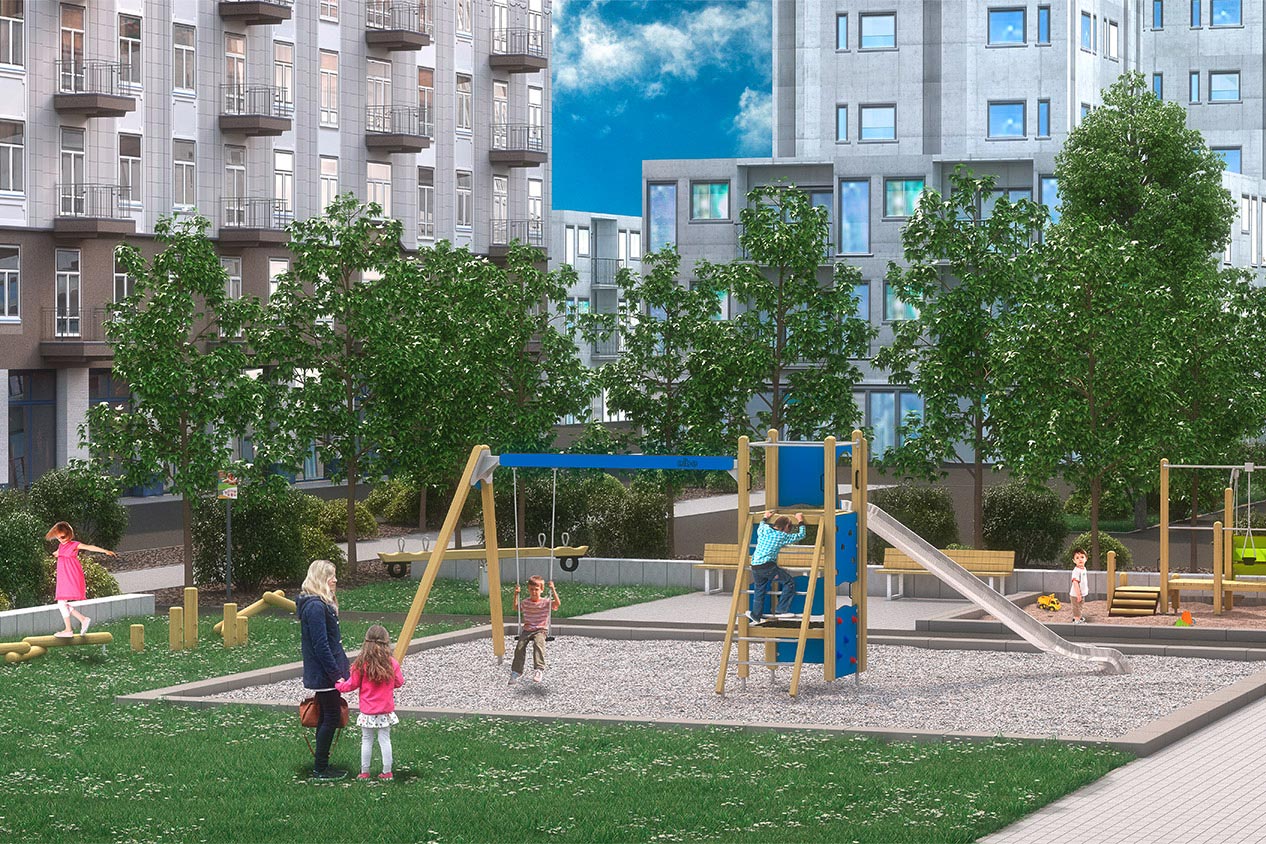An important but often neglected aspect of urban promotion: public playgrounds! To understand the relevance, or rather the connection between promoting and playgrounds, one only needs to take a look at profit-oriented companies.
Table of contents
- Public playgrounds in furniture stores, restaurants and retail outlets
- City marketing with high demands and many benefits
- Public playgrounds for communities, cities, towns and villages: there is a lot to consider!
- What the experts say?
Public play areas in furniture stores, restaurants and retail outlets – the commercial sector is leading the way!
Why do so many markets, furniture stores, shopping centres and restaurants offer their customers well-thought-out, well-planned public play areas? A well-known example: the large Swedish furniture store with its popular Småland.
Certainly not out of public spirit – but because they hope to benefit! Because while the children play happily, the adults can shop without worry and in peace. A real win-win situation, in this case perhaps even a win-win-win (children, parents, company). A great facility with attractive play equipment and maybe even with a special theme is a customer magnet! The company shows its family-friendliness, also retains customers and sets itself apart from the competition.
City promotions with high aspirations and benefits
If this model works so well for businesses, it follows that there should also be a benefit for a non-commercial sector. This is not that complicated: public playgrounds are visited by families. Families who usually live in the immediate vicinity. If the surroundings are attractive and the offer is right, the influx of families is therefore usually assured. Of course, a playground is only a small part of this environment – but it should still be taken into account.
A well-planned playground with well thought-out play equipment shows that a city cares about the needs and wishes of its citizens. After all, much more happens on the playground than is visible at first glance: children develop gross and fine motor skills as well as social skills. The immune system also benefits from the fresh air. In addition, many health problems, such as obesity, are prevented thanks to exercise. Friendships and contacts are made, both among children and parents. The community is strengthened. The relaxation and recreation factor on a playground is very high! Clearly, a beautiful, varied public playground shows families that they are important and valuable to a community as “customers” or citizens.
Public play facilities for community, cities, towns and villages: there is a lot to consider!
However, in contrast to play facilities integrated into a commercial setting such as retail, there is much more to consider for community-owned public play facilities or spaces. This is because there are more diverse demands and expectations. There are parents and children, the primary target group. But there are also the residents who come into contact with the playground. Also involved in the planning of public play areas are the financial backers, the hopefully existing sponsors and the administrators. The public and the media must also be taken into account. From the sheer number of these various groups, one quickly realises that, in contrast to the play world in the furniture store, there are much more complex requirements, but also much more long-term advantages.
What the experts say?
Local greenspaces important for children of all ages and backgrounds – GOV.UK (www.gov.uk)
“Local greenspaces important for children of all ages and backgrounds”
The publication includes the statement:
“The findings highlight the importance of local greenspaces, including urban parks, recreation grounds and playgrounds for children’s play and experience of the natural world. Across all age groups and backgrounds, local greenspaces provide an important opportunity for children to experience the natural environment on a regular basis, with these spaces becoming even more vital for children who are least likely to visit the natural environment frequently.”
Also, in Germany:
Prof. Dr. Rainer Hartmann, Bremen University of Applied Sciences, an expert in leisure and tourism management, says:
“Especially the installation of playgrounds in the city cannot […] be the task of urban planners alone. An optimal design and placement of playgrounds and/or playground equipment in the city is a holistic task that is the responsibility of all relevant actors in the city and thus represents an important topic area of city marketing. […]”.
In a publication by the Federal Ministry of Transport, Building and Urban Affairs entitled “City as a place for families to live”, it states on the subject of public play facilities:
“Playgrounds remain an important building block towards more family-friendliness, especially in residential areas with dense housing development and an overall low-stimulation residential environment”.
The exciting study presents new strategies for urban family living and sheds light on national urban development policy. Among other things, it asks questions about housing and living conditions in cities, family-friendly living environments and the conditions for success of municipal, family-oriented urban policy.
Read more: Play and exercise areas for young and old can also enrich a city – but only if they address the needs of all generations. We reveal what is important here in our blog post “Sustainable urban planning”.

